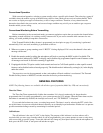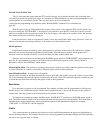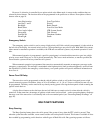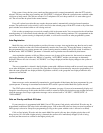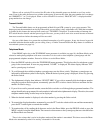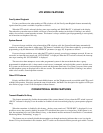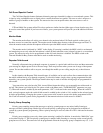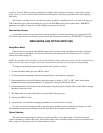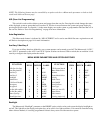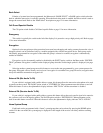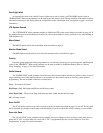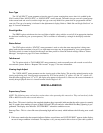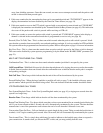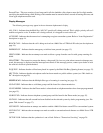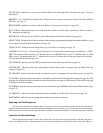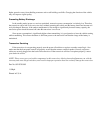OUT-OF-RNG - Indicates an out-of-range condition. Refer to the “Intercept Tone” description on page 22 for more
information.
PRIORITY 1 or 2 - Indicates that a Multi-Net or LTR priority call is being received (see “Calls on Priority and Block
ID Codes” on page 14).
PROG ERROR - Indicates a memory read error. Refer to “Transceiver Servicing” on page 26.
RCV AUD PA - Indicates that the receive audio has been routed to a public address system (see “Receive Audio to
PA” description on page 20).
RING BACK - Indicates that the LTR Free System Ringback mode has been entered (see page 16).
SELECT NBR - Displayed in the Phone mode to indicate that a preprogrammed telephone number should be select-
ed or a number should be dialed manually (see page 15).
SNGLE SCAN - Indicates that the Single-Site type of scanning is occurring (see page 11).
SUMMIT 8 or 9 V 2xx X - This message is displayed for an instant when transceiver power is turned on. “SUM-
MIT” is the model of the transceiver, “8” indicates that it is an 800 MHz version, and “9” indicates that it is a 900
MHz version. The number after the “V” identifies the version of software that is being used, and the last number
indicates the tier level of the transceiver.
SYS SEARCH - Indicates that the LTR System Search mode has been entered (refer to page 16).
SYSTEM BSY - This along with a busy tone indicates that the radio system is currently busy (see “Busy Tone” de-
scription on page 22).
TX DISABLE - Indicates that the selected conventional system is programmed for monitoring only (see page 18).
TX DIS BSY - Indicates that the transmitter is disabled by the Transmit Disable On Busy feature (see page 16). This
message also indicates that the transmitter has been keyed while receiving an LTR message. Wait until the message
is finished to key the transmitter.
TX INHIBIT - Indicates that the transmitter has been disabled by the LTR/Multi-Net Transmit Inhibit feature (refer
to page 15).
TX TIMEOUT - Indicates that the transmitter has been disabled by the Time-Out Timer (refer to page 14).
RMT ERROR - Indicates that an incompatible remote control unit is connected.
Speaking Into The Microphone
For best results, hold the microphone about 1-2 inches away from your mouth and speak slowly and distinctly at a
normal conversational level. Do not shout into the microphone since it distorts your voice and does not increase range.
Make sure the push-to-talk switch is pressed before you begin to speak and released as soon as the message is complete.
Operation At Extended Range
When approaching the limits of radio range, others may not always hear your transmissions and there may be an
increase in background noise when messages are received. Communication may be improved by driving the vehicle to



